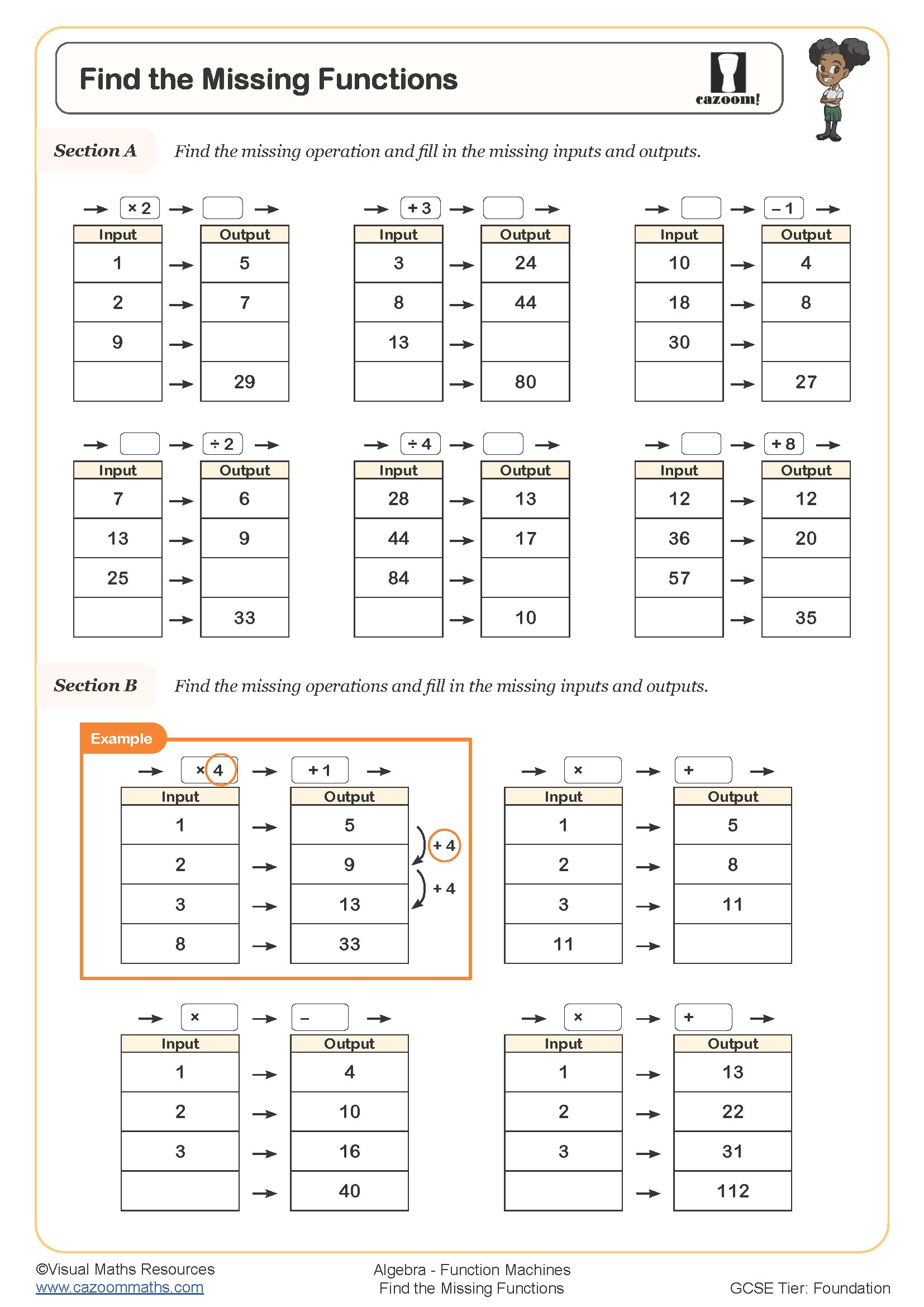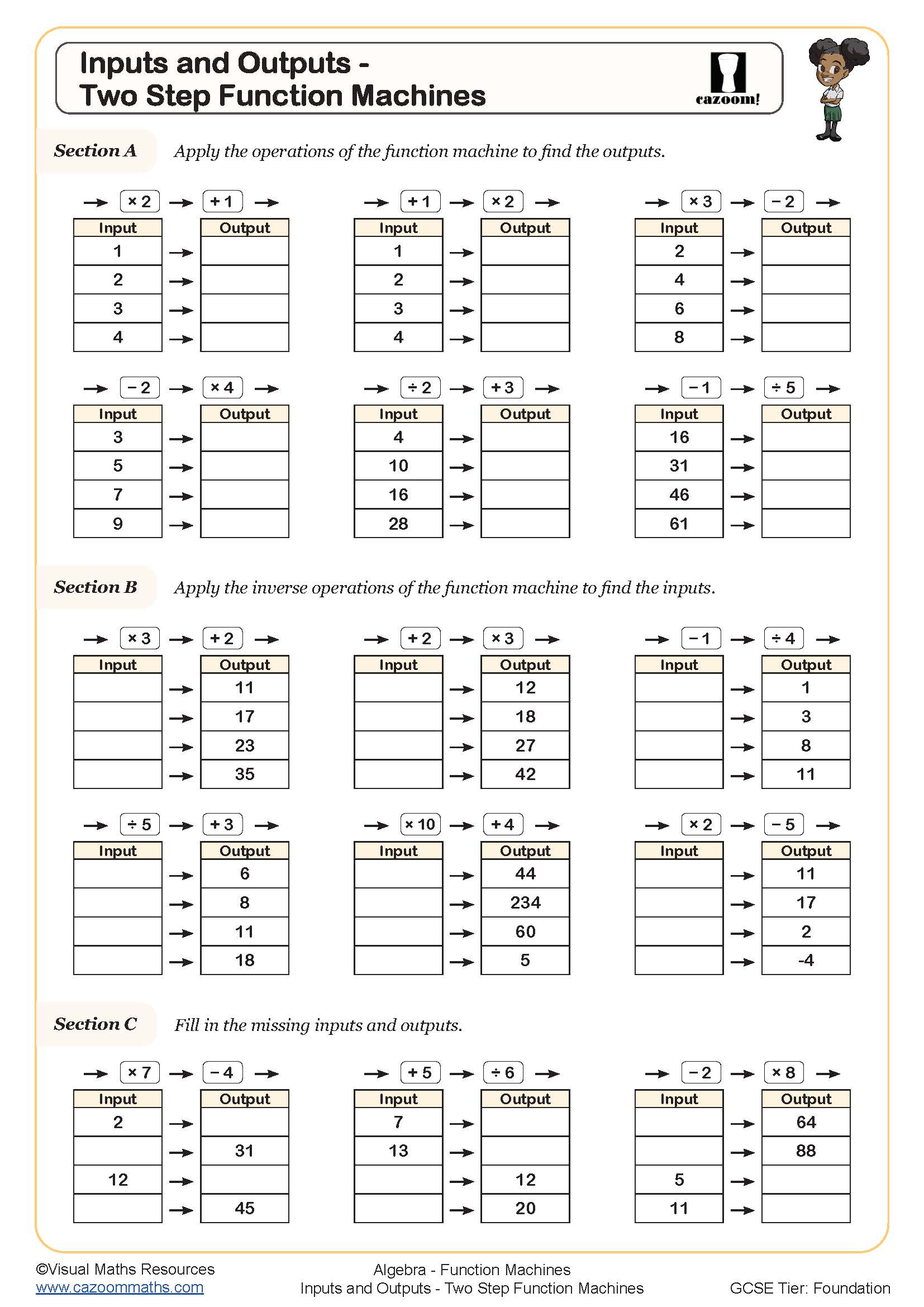Year 7 Function Machines Worksheets
Function Machine Practice Sheets That Actually Make Sense
Our Cazoom Maths expert team has observed that advanced algebra skills can be confusing for your young students who are transitioning from KS2 to KS3. However, without learning these basic algebra equations properly, your secondary school students will face difficulties. To make this learning process smooth and convenient, we have created our worksheets in ready-to-use, printable PDF format. Each of these worksheets includes separate answer sheets to facilitate an easy checking process. Download our maths activities right now to provide the extra help your young learners need!
Essential Function Machine Skills Your Year 7 Students Will Master
A function machine is like a mathematical box that takes a number you put in (the input) and changes it using a specific rule to give you a different number out (the output). For example, if the rule is "add 3" and you put in the number 5, the machine will give you 8 as the result.
Here are the concepts included in our function machine PDF resources-
• Find the Missing Functions
• Forming Expressions from Function Machines
• Inputs and Outputs
• Inputs and Outputs – Two-Step Function Machines
Why Year 7 Students Struggle Without Function Machine Practice
We have seen that the students who skip function machine fundamentals often struggle with later algebraic concepts. These worksheets bridge that gap perfectly, connecting abstract thinking with concrete examples. Regular practice transforms confusion into confidence, preparing students for GCSE-level algebra.
• Develops logical thinking patterns essential for algebra
• Builds confidence with mathematical operations and sequences
• Strengthens problem-solving strategies through visual methods
• Prepares students for more complex algebraic expressions
• Creates a solid foundation for understanding inverse operations
Where Students Actually Use Function Machine Concepts
Function machines appear everywhere in mathematics – from coordinate geometry to scientific formulas. We've seen that satisfying moment when students recognise function patterns in physics equations, geography data analysis, and even computer programming logic. It's actually quite rewarding watching those connections form.
• Creating graphs and understanding coordinate relationships
• Solving scientific equations in physics and chemistry lessons
• Analysing data patterns in geography and statistics work
• Programming sequences and algorithms in computing classes
• Understanding financial calculations in business studies contexts
• Building logical reasoning skills for problem-solving across subjects



